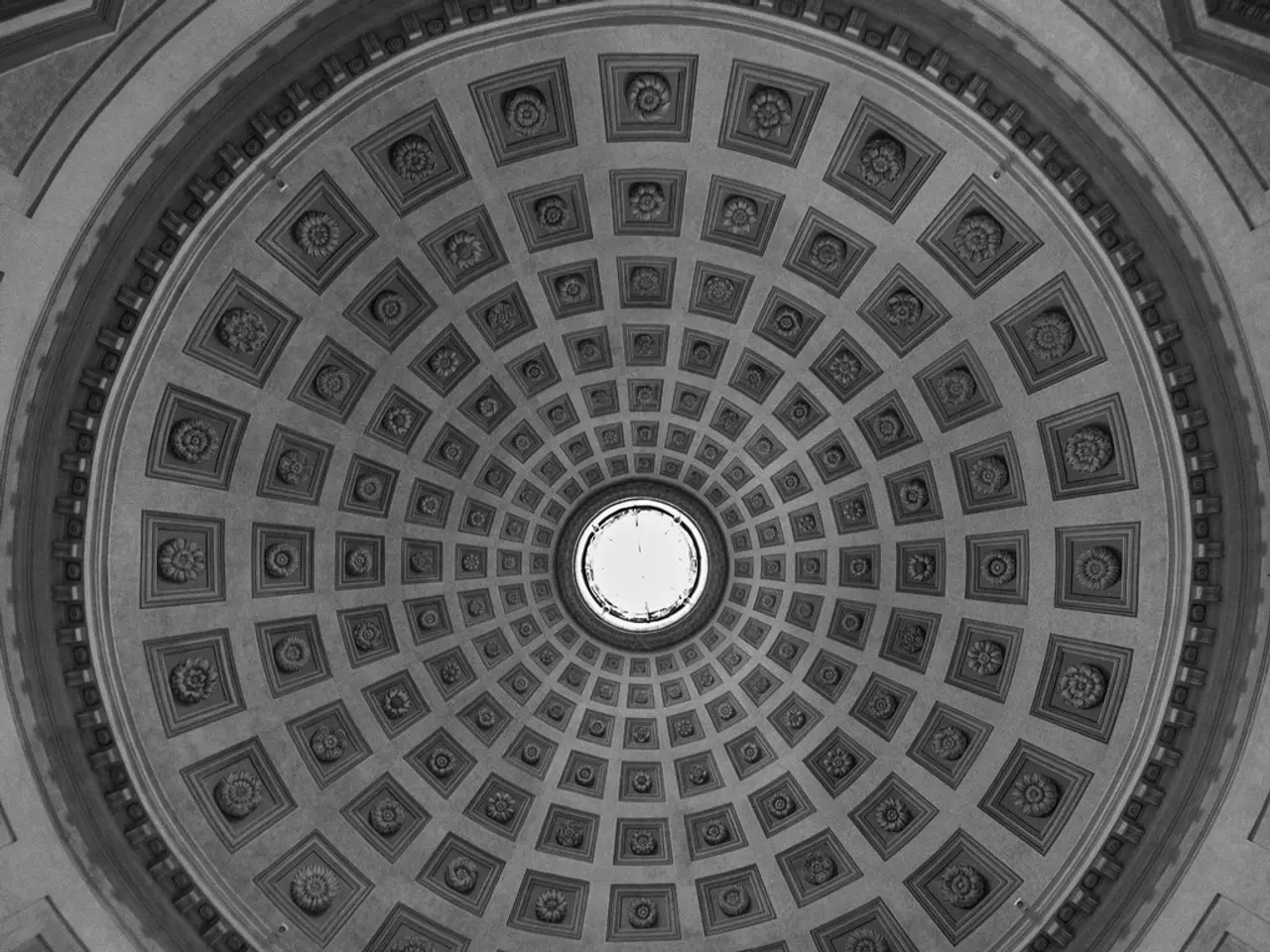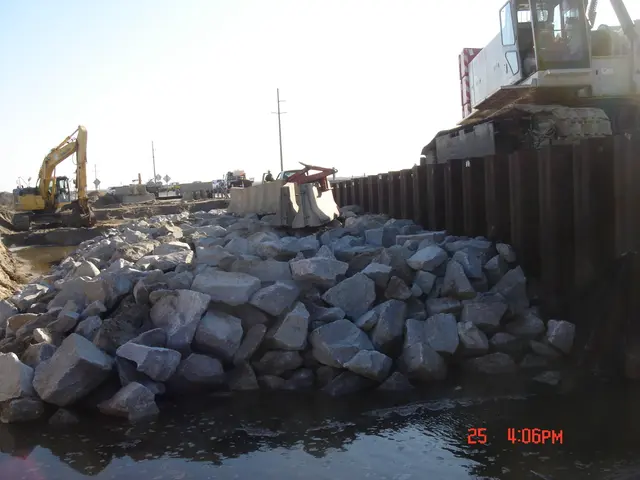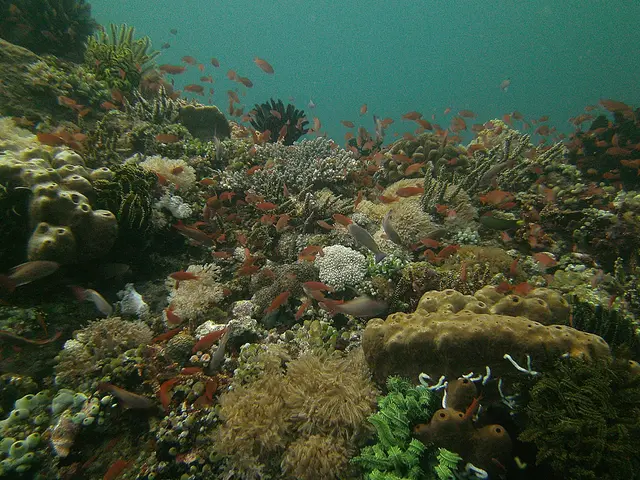Strategies for Lessening the Urban Heat Island Impact and Regulating rainwater runoff in the context of obtaining the USGBC LEED Green Associate certification
In urban areas, managing stormwater runoff and reducing the heat island effect are crucial for maintaining a healthy environment. Two innovative solutions that have gained attention are vegetated roofs, also known as green roofs, and rainwater collection systems.
White cement roof pavers, while high in solar reflectance index (SRI), do not offer any benefits for stormwater management. As they are impervious surfaces, they do not retain or filter rainwater, unlike vegetated roofs.
Vegetated roofs, on the other hand, contribute significantly to managing rainwater runoff. The plants and growing medium in these roofs absorb and filter rainwater, improving water quality. Moreover, they help retain and slow down the flow of rainwater, reducing the volume and velocity of runoff. This not only prevents flooding but also improves the overall water management system.
Vegetated roofs also play a vital role in reducing the heat island effect. Compared to traditional dark-colored roofs, they absorb less heat and reflect more sunlight. This is due to plant evapotranspiration and reflection, which help lower roof surface temperatures. As a result, they contribute to cooling the urban environment.
A rainwater collection system, while effective in capturing and storing rainwater for reuse, does not directly contribute to reducing the heat island effect. It does not affect the surface temperature of the roof or the surrounding air. However, it does help reduce stormwater runoff, which indirectly contributes to cooling the urban environment by reducing the amount of heat-absorbing water that flows into storm drains.
Shading structures, whether with photovoltaic panels or not, do not provide any benefits for stormwater management. While they help lower the surface temperature of the roof, they do not retain or filter rainwater. However, shading structures with photovoltaic panels do offer the additional benefit of generating renewable energy from solar power.
In addition to their environmental benefits, vegetated roofs can improve the ecological health and resilience of the ecosystem. They provide a space for plants, animals, insects, and microorganisms to thrive, enhancing biodiversity and the habitat of the urban environment. Furthermore, they offer aesthetic and recreational benefits for humans, creating green spaces in otherwise concrete jungles.
In conclusion, while white cement roof pavers and shading structures have their merits, it is vegetated roofs and rainwater collection systems that offer the most comprehensive solution for managing stormwater runoff and reducing the heat island effect in urban areas.
Read also:
- Overcoming Yielding Regulations Hurdles in Indian Export Sector for EU Markets
- Shaping production and consumption tendencies via cosmetic certification
- Health care professionals targeted in a shooting incidents, a pattern of hostile actions against health workers continues to unfold, with many observing this trend as unremarkable.
- Transgender individuals' journey towards aligning their gender identity: Key aspects







